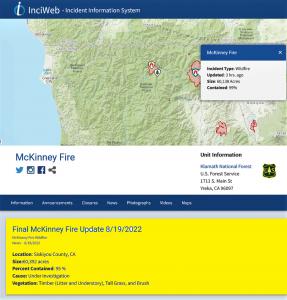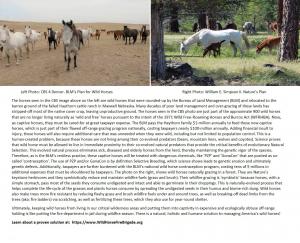National Media Coverage Details New Plan To Reduce Wildfire Called ‘Wild Horse Fire Brigade’
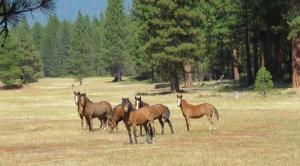
Family of wild horses that lives in a remote forest have symbiotically grazed-in a fire-break, cost-effectively providing a year-round fire break protecting a forest
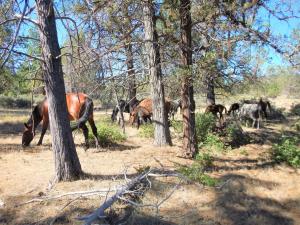
A family band of native species American wild horses is seen symbiotically reducing wildfire fuels off a forest floor, making the trees more fire resistant. Photo: William E. Simpson II
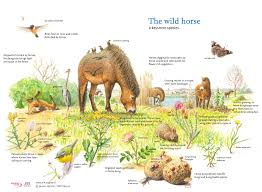
Wild Horses are 'keystone herbivores' and are critical components in a balanced ecosystem: Image from Rewilding Europe
Studies suggest that wild horses offer cost-effective wildfire mitigation on public lands via year-round management of grass and brush
Examples of these media outlets include:
NPR National Radio: ‘Wild Horses Could Keep Wildfire At Bay’
https://www.npr.org/2022/07/08/1110474146/wild-horses-could-keep-wildfire-at-bay
Philanthropy Magazine: ‘Letting Wild Horses Run Free to Curb Wildfires’
https://www.philanthropy.com/article/letting-wild-horses-run-free-to-curb-wildfires
ABC NEWSWATCH 12 KDRV: ‘More wild horses equals less fire fuels’
https://www.kdrv.com/news/top-stories/more-wild-horses-equals-less-fire-fuels/article_f0c57e12-c70d-11ec-8cca-4b6fcee463b9.html
THE HILL: ‘Equilibrium/Sustainability — Wild horses could help temper Western wildfires’
https://thehill.com/policy/equilibrium-sustainability/3585146-equilibrium-sustainability-wild-horses-could-help-temper-western-wildfires/
CBS Investigative News Colorado: ‘Mustangs Used For Wildfire Mitigation? Nonprofit Proposes Possible Solution To Wild Horse Debate’
https://www.cbsnews.com/colorado/news/mustangs-wildfire-mitigation-rancher-solution-wild-horse-debate/
ABC NEWS 15 Arizona: ‘Could horses be the solution to preventing wildfires in our state?’
https://www.abc15.com/weather/impact-earth/could-horses-be-the-solution-to-preventing-wildfires-in-our-state
“The plan known as ‘Wild Horse Fire Brigade’ proposes reestablishing the collapsed herbivory to reduce wildfires in the western United States, where deer populations have dropped very significantly” said Deb Ferns, President of the all-volunteer non-profit organization ‘Wild Horse Fire Brigade’.
Extensive scientific studies show that; when populations of large-bodied herbivores collapse, catastrophic wildfires evolve.
(See W.J. Ripple – Collapse of the world’s largest herbivores: https://www.science.org/doi/10.1126/sciadv.1400103)
In California, deer populations have dropped by at least 2-million deer over the past 40-years, and in Oregon, deer populations are down by about 500,000.
These missing deer had previously been abating approximately 3-million tons of annual grass and brush just in California and Oregon.
That massive tonnage of annually recurring wildfire fuel is now subjected to longer, hotter summers resulting from climate change, making these prodigious fuels more volatile over an extended period of time. The result is a perfect setup for the evolution of the more frequent, abnormally large, super-hot wildfires that we are now experiencing.
Wildfire forensic data over the past 5-years from InciWeb shows that over 80% of catastrophic wildfires in Oregon and California involve ‘grass and brush’ as the key fuels.
An example of that data was reported by the USFS in regard to the recent McKinney Fire, that devastated over 60,000 acres of remote wilderness, which resulted in disastrous post-wildfire erosion and a debris-flow that killed tens of thousands of salmon, steel-head, trout and other fishes and aquatic life in the Klamath River.
SEE: Field & Stream article: 'Debris from California Wildfire Causes Massive Fish Kill on the Klamath River'
https://www.fieldandstream.com/conservation/klamath-river-fish-kill-mckinney-fire/
According to CALFIRE, grass and brush are ‘flashy fuels’, which are also known as 1-hour class fuels. One-hour class fuels are vegetative materials that are a quarter-inch inch in diameter or smaller, and are key wildfire fuels on the landscape. These same vegetative wildfire fuels happen to be the natural forage for native species American wild horses.
These grass and brush fuels are well-known to kindle fire, burn extremely hot, and carry fire to other heavier fuels and structures.
The reduction these fuels is a very effective method for the reduction of ignition and spread of wildfire, and is accomplished naturally, year-round by native herbivores, such as the wild horses.
It will require many decades of greatly improved wildfire management to reestablish the collapsed deer populations in California and Oregon.
But as it so happens, wild horses are immediately available to all government authorities (cities, counties and states) under the 'Humane Transfer of Excess Animals Act' (H.R. 1625) from taxpayer-funded off-range holding facilities managed by the Bureau of Land Management ('BLM').
H.R. 1625 and other informational resources available here: https://www.wildhorsefirebrigade.org/downloads
Upon transfer of wild horses under this existing law (H.R. 1625), these horses are provided with protections for their health, safety and welfare, and become 'work animals' (under definition of the Act). Then, as is the current case with livestock, these horses can be deployed through cooperative wildfire grazing agreements (already being done with cattle and sheep on some USFS lands) into ecologically and economically appropriate remote wilderness areas that are at grave risk from catastrophic wildfire.
That said, horses are significantly more ecologically appropriate in wilderness areas over ruminant livestock (cattle, sheep and goat).
This is because horses don't digest the seeds of the north American native flora (grasses and plants) they eat. In fact, via the 1.8 million years of co-evolution between north American wild horses and flora, horses actually complete the life-cycles of the grasses and plants they eat by naturally reseeding through their droppings.
Scientific studies prove that; unlike cattle, sheep and goats that as ruminants digest all the seeds they consume, horses pass most of the seeds they eat onto the landscape in their droppings, intact and able to germinate. The digestive system of horses benefits the other co-evolved fauna that also depend upon the sustainability of these grasses and plants for their sustenance. Fauna which benefit from wild horses reseeding plants and grasses include; deer and a host of other mammals, birds and even pollinators.
We also see mention of this wisdom in the Wild Free-Roaming Horse and Burro Act (WFRHBA) of 1971, where in regard to wild horses, Congress stated: "...they contribute to the diversity of life forms within the Nation..."
Incredibly, we now have more wild horses in captivity than wild in America. And wild horses that have been rounded-up, have been branded and placed into expensive taxpayer-funded confinement by the BLM, and are now non-breeding animals (genetically molested by the BLM; sterilized). As disturbing as this mismanagement of wild horses is, the 65,000+ wild horses currently being held in confinement by the BLM remain extremely useful in cost-effectively reducing wildfire fuels, and can do so year-round if properly rewilded into remote wilderness areas that are both ecologically and economically appropriate.
And via their deployment into wildfire grazing roles to reduce wildfire, taxpayers no longer need to foot-the-bill for the $150-million per-year spent by the BLM to hold these wild horses in captivity and feed them grass, and these wild horses regain their freedom.
“There is no doubt that the collapsed herbivory resulting from bad natural resource management has resulted in the evolution of the pyrocene era we are now experiencing, and the obvious solution is the reestablishment of our native species herbivore populations. The good news is that we can fix this problem if we act soon”; said William E. Simpson II, a wild horse ethologist and Founder of the all-volunteer non-profit called Wild Horse Fire Brigade.
Mr. Simpson was the principal investigator in a 5-year-long continuous study of the behavioral ecology of wild horses and their impact on wilderness and wildfire.
The Executive Summary of Simpson's Study can be read as a PDF here: https://www.wildhorsefirebrigade.org/_files/ugd/b50928_b546b19ef08441349993b0d3fd8111eb.pdf
As it turned-out, Mr. Simpson’s thesis was tested by an actual wildfire (38,000 acre Klamathon Fire) where the symbiotically grazed areas by the herd of wild horses Simpson studies provided safe zones for CALFIRE men and equipment as well as natural fire-breaks, which aided CALFIRE’s suppression efforts and helped save the Forest and wildlife of the Cascade Siskiyou National Monument during that 2018 wildfire.
Simpson’s five-year Study is published as an abstract at GrazeLIFE: ‘Wild horse fire brigade: lessons in rebalancing North American ecosystems by rewilding equids’
https://grazelife.com/blog/wild-horse-fire-brigade-lessons-in-rebalancing-north-american-ecosystems-by-rewilding-equids/
William E. Simpson II
Wild Horse Fire Brigade
+1 858-212-5762
gemmaster7@aol.com
Reducing Wildfire Fuels Naturally and Cost Effectively
Legal Disclaimer:
EIN Presswire provides this news content "as is" without warranty of any kind. We do not accept any responsibility or liability for the accuracy, content, images, videos, licenses, completeness, legality, or reliability of the information contained in this article. If you have any complaints or copyright issues related to this article, kindly contact the author above.

